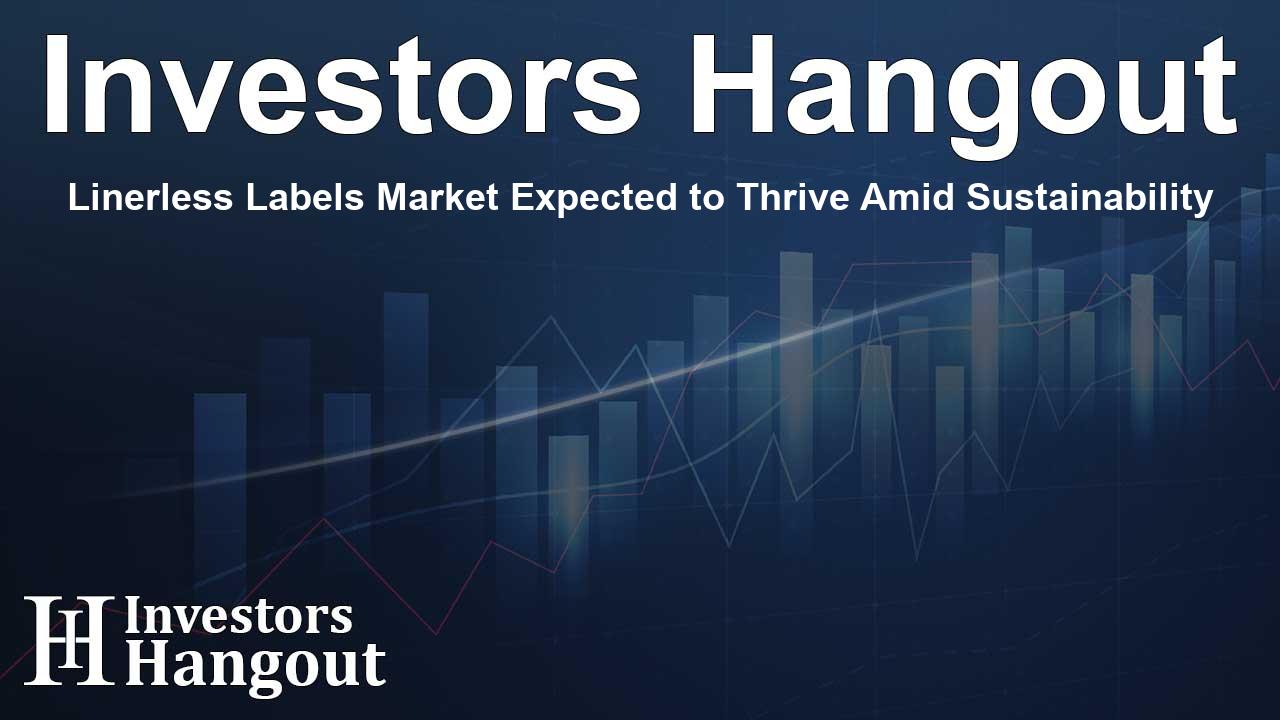Linerless Labels Market Expected to Thrive Amid Sustainability

Linerless Labels Market Expected to Thrive Amid Sustainability
The linerless labels market is on the verge of significant growth, with expectations to expand from USD 2.1 billion to USD 3.2 billion by 2035. This growth is driven by a robust compound annual growth rate (CAGR) of 4.2% between 2025 and 2035, reflecting the increasing demand for sustainable packaging solutions.
Current Market Dynamics
Recent industry insights indicate that the revenue from linerless labels reached USD 2.0 billion in 2024, highlighting a burgeoning interest in environmental packaging alternatives. These labels are becoming a popular choice due to their cost-effectiveness and eco-friendliness.
Factors Driving Market Growth
- Many leading packaging manufacturers are opting for linerless labels for their versatility with various food products.
- The elimination of non-recyclable release liners significantly reduces costs and environmental impact.
- Growing trends in the food and beverage sector demand eco-friendly and flexible packaging solutions.
- Linerless labels yield reduced waste compared to traditional pressure-sensitive options, offering more product volume on the same roll.
- Improved workplace safety is achieved by eliminating slippery silicone-based liners.
- The on-the-go lifestyle has increased reliance on ready-to-eat foods, bolstering demand for packaged options.
- As incomes rise, there is a notable surge in the appetite for packaged food items.
- Cultural shifts and a focus on convenience, influenced by Western lifestyles, further drive this demand.
- Emerging economies are witnessing stringent regulations concerning food safety.
- Linerless labels are gaining traction in e-commerce and shipping, enhancing product delivery safety.
Key Drivers of Market Growth
- Sustainability Initiatives: As businesses worldwide emphasize reducing packaging waste, the adoption of linerless labels aligns perfectly with sustainability objectives.
- Cost-Efficiency: Less material use translates to lowered production costs, making linerless labels attractive for companies aiming to reduce overheads.
- Increased Adoption in Food & Beverage Sector: The demand in the food and beverage industry is substantial, especially for durable labeling solutions that withstand harsh conditions.
- Technological Advancements: Innovations in label printing and adhesive technologies are enhancing the appeal of linerless labels across various industries.
Regional Insights into Market Growth
As we look through various regions, North America maintains a stronghold as the largest market for linerless labels, driven by early adoption of sustainable solutions. Europe is also showing impressive growth due to strict regulations aimed at reducing plastic waste, fostering a favorable environment for linerless label manufacturers.
Emerging Markets
In the Asia-Pacific region, countries like China and India are leading the charge in growth rates, with demand for eco-friendly packaging climbing in tandem with an expanding retail and food industry. As consumer awareness about environmental issues rises, these markets present significant opportunities for linerless label adoption.
Future Innovations and Trends
The current trends signal a growing movement toward novel labeling solutions that not only serve functional purposes but also appeal aesthetically to consumers. The flexible packaging industry is increasingly integrating linerless labels into their offerings as they discover their potential in enhancing product presentation.
Challenges and Competition
Despite the promising outlook, the market will need to navigate various industry challenges. The adaptability of linerless labels in e-commerce packaging and logistics remains a vital area of focus as more companies strive to improve supply chain efficiency without compromising on sustainability.
Frequently Asked Questions
What is driving the growth of the linerless labels market?
The growth is primarily driven by sustainability initiatives, cost efficiencies, and increased adoption in the food and beverage sectors, along with technological advancements.
How does the lack of a liner benefit businesses?
Removing the liner reduces material costs, waste, and environmental impact while improving safety in the workplace.
Which regions are leading in this market?
North America is currently the largest market, with significant growth in Europe and the Asia-Pacific region, particularly China and India.
What sectors are best suited for linerless labels?
The food and beverage sector, as well as retail and e-commerce, are prime areas for linerless label application due to their durability and aesthetic appeal.
What future trends are expected in the linerless labels market?
Expect ongoing innovations in product design, printing technologies, and sustainable practices driving further adoption and integration across various industries.
About The Author
Contact Lucas Young privately here. Or send an email with ATTN: Lucas Young as the subject to contact@investorshangout.com.
About Investors Hangout
Investors Hangout is a leading online stock forum for financial discussion and learning, offering a wide range of free tools and resources. It draws in traders of all levels, who exchange market knowledge, investigate trading tactics, and keep an eye on industry developments in real time. Featuring financial articles, stock message boards, quotes, charts, company profiles, and live news updates. Through cooperative learning and a wealth of informational resources, it helps users from novices creating their first portfolios to experts honing their techniques. Join Investors Hangout today: https://investorshangout.com/
The content of this article is based on factual, publicly available information and does not represent legal, financial, or investment advice. Investors Hangout does not offer financial advice, and the author is not a licensed financial advisor. Consult a qualified advisor before making any financial or investment decisions based on this article. This article should not be considered advice to purchase, sell, or hold any securities or other investments. If any of the material provided here is inaccurate, please contact us for corrections.
